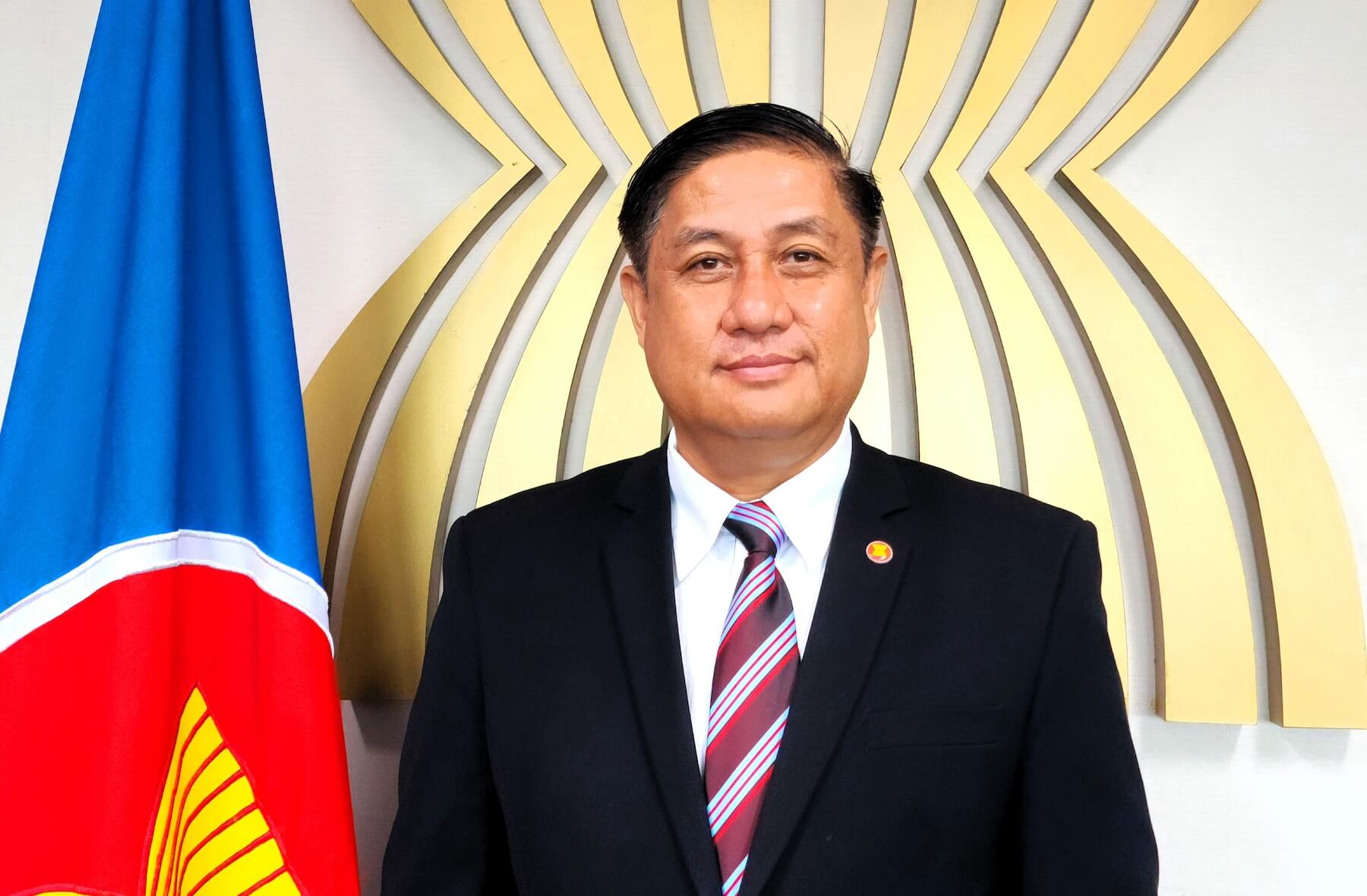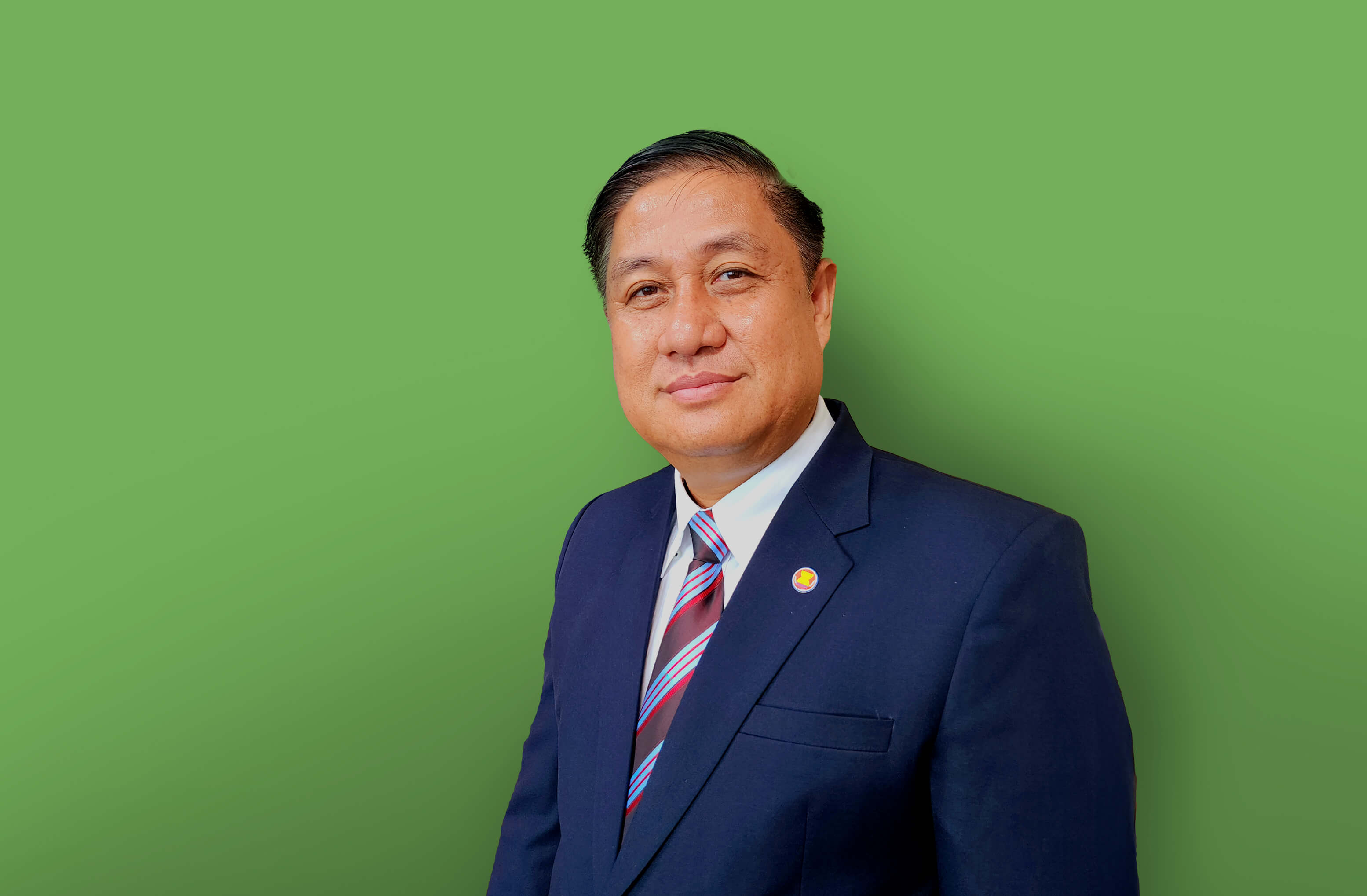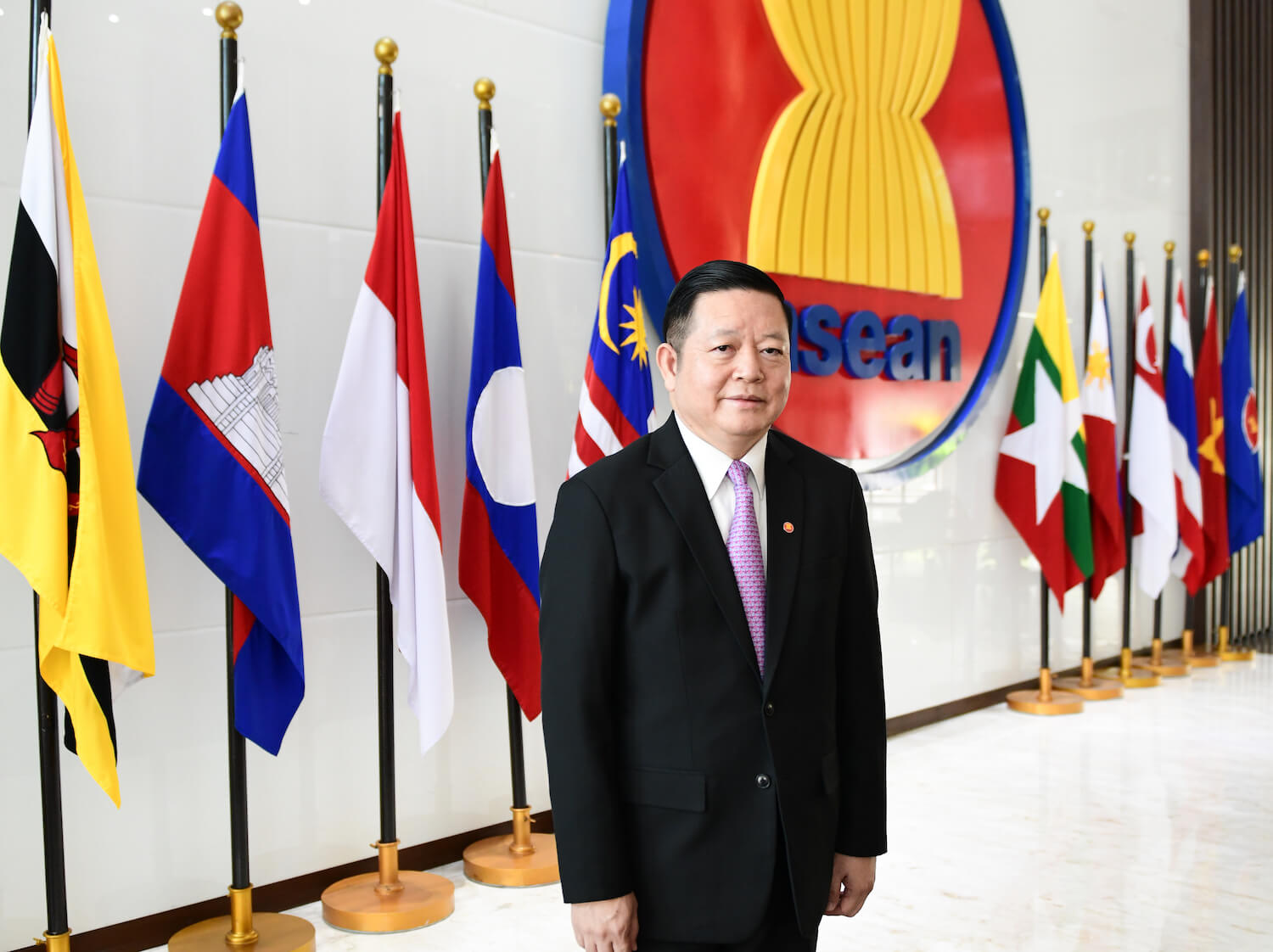


Technical and vocational education and training (TVET) is a vital cog in creating and maintaining a highly skilled workforce and cultivating lifelong learning. By establishing the ASEAN TVET Council (ATC) in 2020, ASEAN reinforces its commitment to developing the region’s human resources to meet the future of work. Director-General Isidro S. Lapeña of Technical Education and Skills Development Authority (TESDA), as inaugural Chair of the ATC, discusses ATC's plans for expanding and raising the quality of TVET in the region.
Can you share with us the plans and priorities of the ASEAN TVET Council under the leadership of the Philippines?
Under the Philippine leadership, the ATC’s first priority is the development of Photo Credit: © TESDA the medium-term work plan which will serve as the Council’s guide in the development of policies and implementation of programmes and activities.
We shall also promote strategic collaboration mechanisms with other sectoral bodies and external partners. This will be an integral part of the work plan to ensure that we will meet our objectives knowing that the active engagement of all key stakeholders, especially our industry partners, remains a crucial element in the success of skills development in any country.
We discussed the zero draft ATC Work Plan with the focal points during the 1st meeting of the Council on 10 March 2021. After this meeting, the Philippines plans to proceed with the finalisation of the work plan through further consultations and validation with all the ASEAN Member States.
How does the ATC intend to help the technical and vocational education and training systems in the region become future-ready?
The Roadmap of the ASEAN Declaration on Human Resources Development for the Changing World of Work, ASEAN Comprehensive Recovery Framework, and relevant sectoral plans have already laid out important programmes and activities in terms of enhancing the TVET systems for the future of work. These provide a good starting point for the ATC. We just need to build upon and complement these existing programmes and activities as we move forward.
But just to highlight some, I believe the ATC will need to focus and provide actionable policy recommendations on the following areas to ensure the readiness of TVET systems in the changing world of work: i. Institutionalisation of industry-led and demand-driven TVET: The ATC must establish strategies or cooperation models that will strengthen industry leadership in the development of TVET policies, training curricula, assessment and certification standards, quality assurance systems, as well as industry’s participation in the delivery of training. These must also be supported by skills needs anticipation initiatives and an active labour market information system. ii. Promotion of ICT-based models/ approaches in TVET: These include establishing flexible modes of TVET delivery, including competency assessment; increasing investments for the learning systems of the future; developing and incorporating digital skills or transversal skills in the curriculum; pursuing futures thinking in TVET; and strengthening research and innovations in TVET. iii. Institutionalisation of lifelong learning: As technology and labour market changes, our people will no longer be confined to delivering specific competencies but will require other allied competencies to work with other people and with intelligent machines to remain relevant. Given this, we need to institutionalise a system that will allow our people, especially those already in the labour force, to pursue continuous learning, re-skilling, and upskilling to remain competitive and relevant. This also highlights the need to incorporate 21st century skills or transversal skills in the TVET curriculum. iv. Building the capacities of TVET trainers and personnel: Along with improvements in the infrastructure, curriculum, and processes in TVET systems, it is also critical to continuously improve the capacities of TVET trainers to ensure the quality of our training. This can be supported by the promotion of industry exposure for TVET trainers and assessors, encouraging industry experts to work as (at least) part-time TVET trainers and assessors, and pursuing TVET teachers exchange programmes.
Moreover, we recognise that Member States have different levels of institutional capacities, their own approaches to implementing training, and varying criteria for recognising competencies and qualifications, among others. Considering this, it is also a good starting point for the ATC to conduct an assessment of the TVET systems of all Member States with a view to harmonising TVET systems and qualifications across the region.
What measures will be carried out to aid the post-pandemic recovery?
With the encouraging developments in the vaccine roll-outs globally, we can see that more and more countries are already gradually shifting to the recovery phase. Our schools, universities, and training institutions are also expected to reopen.
For TVET, targeted approaches and sound policy reforms must be employed. Our immediate priority is to ensure the appropriate reskilling and upskilling of the affected workers for re-employment as economic activities are restarting and business confidence is being restored.
To do so, TVET curriculum must be updated and aligned with the requirements of the post-COVID-19 future of work. This is to sustain the growth of least affected and emerging sectors. It is also needed in order for the hardest hit sectors such as service, tourism, and hospitality to recover and adapt to the new normal realities.
Likewise, ICT-based and flexible modes of TVET delivery (e.g. blended learning, offline e-learning, internet-based learning) must be implemented to ensure the continuity of training in times of disruptions. To ensure that no one is left behind as we move forward with this flexible TVET delivery, we will put in place corresponding measures to address resources and accessibility constraints in remote areas and for people of different socio-economic classes.
More importantly, as technology and labour markets continue to evolve, an enabling environment to pursue lifelong learning will play a key role to achieving a competitive and dynamic workforce amidst disruptions. In support of this, 21st century skills, digital skills, and even socio-emotional skills (empathy and resilience skills) must be included in the TVET curricula and programmes.
What do you think are the barriers to expanding the reach of TVET in ASEAN Member States? What strategies can the ASEAN TVET Council and Member States pursue to address these barriers and increase TVET access for marginalised groups such as persons with disability, out of school youth, etc.
I believe, in most ASEAN Member States, low investment in TVET remains one of the major challenges to expanding the accessibility of TVET, particularly in the countryside. This problem has become more obvious under new realities with the lack of modern TVET facilities to keep up with the demands of emerging technologies and ensure the quality of TVET offerings. For instance, in the Philippines, community-based training activities are being conducted in the rural areas but most of these trainings do not respond to the current and future trends due to limited resources and facilities of the training provider in the area.
This can be addressed or be compensated by exploring effective models of TVET f inancing or by strengthening government and private sector collaboration in TVET delivery, such as through enterprise- based training modality, apprenticeship, or dual-training system.
In terms of improving access of TVET to marginalised groups such as persons with disability (PWDs) and out of school youth (OSYs), the following measures can be further explored:
For PWDs • Development and implementation of customised training programmes, including the necessary devices and technology, that meet their special needs and would allow them to participate in mainstream employment and be economically productive and sustainable. • Incentivising companies that hire PWDs.
For OSYs • Provision of scholarship programmes to encourage participation to training • Career guidance and counselling • Job bridging after training • Improve the image and public perception of TVET • Encourage the participation of companies through apprenticeship • Build networks with youth organisations, youth councils and other similar entities to build confidence and increase youth participation in TVET
At the regional level, the ATC can serve as a venue to share experiences/best practices and explore promising initiatives that would address the needs of the marginalised sectors.
Can you share some of the Philippines’ key accomplishments in improving access to and quality of technical and vocational education and training?
As the authority on TVET in the Philippines, TESDA holds a crucial position as a provider of quality skills.
Guided by the Philippine Development Plan 2017-2022; the National Technical Education and Skills Development Plan 2018-2022; and the TESDA Operational Plan: TVET towards the New Normal, TESDA’s continuity plan during this pandemic, TESDA is committed to pursue and implement the following programmes and strategies to provide relevant, efficient, accessible and high quality technical education and skills development:
i. Constant pursuit of a quality-assured TVET system: TESDA’s establishment in 1994 paved the way for major reforms in the country’s TVET system. It led to the institutionalisation of the Quality Assured Technical Education and Skills Development System where industry consultation is a key component. This is to ensure that we are equipping our people with the necessary competencies in line with requirements of the labour market.
It is also worthy to note that TESDA’s core processes are ISO certified, such as its Standards Development, Program Registration, Assessment and Certification, and Support Services.
More importantly, we have strengthened our adherence to the Philippine Qualifications Framework (PQF). In fact, the PQF was referenced against the ASEAN Qualifications Reference Framework (AQRF), with the Philippine Referencing Report accepted as aligned to the AQRF Referencing Criteria and endorsed by the AQRF Committee to the ASEAN Ministers of Economy, Education and Labour in 2019. This feat allows the Philippines to reference its education standards and competencies with ASEAN Member States that have also referenced their national qualifications framework with the AQRF, thereby easing learner and workforce mobility to and from these countries.
ii. Transforming the Philippines’ TVET to be 4IR-ready: TESDA developed the TVETPH 4.0 Framework which lays down the specific strategies in which we shall be addressing the 4th industrial revolution requirements and how we will cope with the better (new) normal and beyond. As part of this, we are actively pursuing innovation-related initiatives to truly transform TVET in the Philippines. We are constructing innovation centres nationwide to facilitate research and development initiatives in TVET as well as harness the potential of learners to develop innovative products and services. We are also integrating research and research-related competencies within TESDA as well as in our training programmes to cultivate a culture of innovation in our learners, as well as our teaching and non-teaching staff.
We are also working on developing higher- level training programmes that can produce TVET graduates who are critical thinkers and have the ability to innovate and engage in entrepreneurial activities.
iii. Moving towards an area-based and demand-driven TVET in the age of 4IR: We are also putting emphasis on our area-based and demand-driven TVET framework as a guide in all our programmes and services. From consultations with industry, to the development of training regulations, as well as the actual delivery of TVET programmes, we make sure that we are guided by this framework. We understand that different parts of the country have differing skills needs, and having this in place allows us to adjust our programmes accordingly to fit any setting.
iv. Continuous provision of scholarship programmes: To promote equity and access to quality TVET programmes, TESDA has been providing scholarships to its beneficiaries. These assistance programmes were further expanded with the passage of milestone legislative agenda of the government such as the Universal Access to Quality Education and Tulong Trabaho laws that made education and training in the Philippines more accessible.
For TESDA, our priorities and policy directions are aligned with our guiding principle, TESDA Abot Lahat (to reach everyone), a commitment to serve everyone while providing special attention and intervention to people in the lower strata of the society, including the marginalised, excluded, disadvantaged, and vulnerable.
v. Establishment of provincial training centres nationwide: To ensure that a bigger number of the population get access to TVET, the agency strived to establish additional training centres across the country, especially in the provinces. TESDA’s objective is to provide at least one provincial training centre per province. To date, 59 new training centres were established in different parts of the country with the support of various local government units.
vi. Convergence with other partners in the government and private sector: With TESDA leading the national Poverty Reduction, Livelihood and Employment Cluster which pursues the whole-of-nation approach to building developed and sustainable communities, the Philippines has brought access to TVET to far-flung areas. Residents of geographically isolated and disadvantaged areas and members of indigenous communities are given skills training appropriate to their needs and locations.
The private sector provides necessary marketing linkages. In the Davao region for example, a convergence project continues to achieve success. After indigenous communities are trained in banana cardava production, a private partner is tapped to ensure an available and existing market for their produce.








